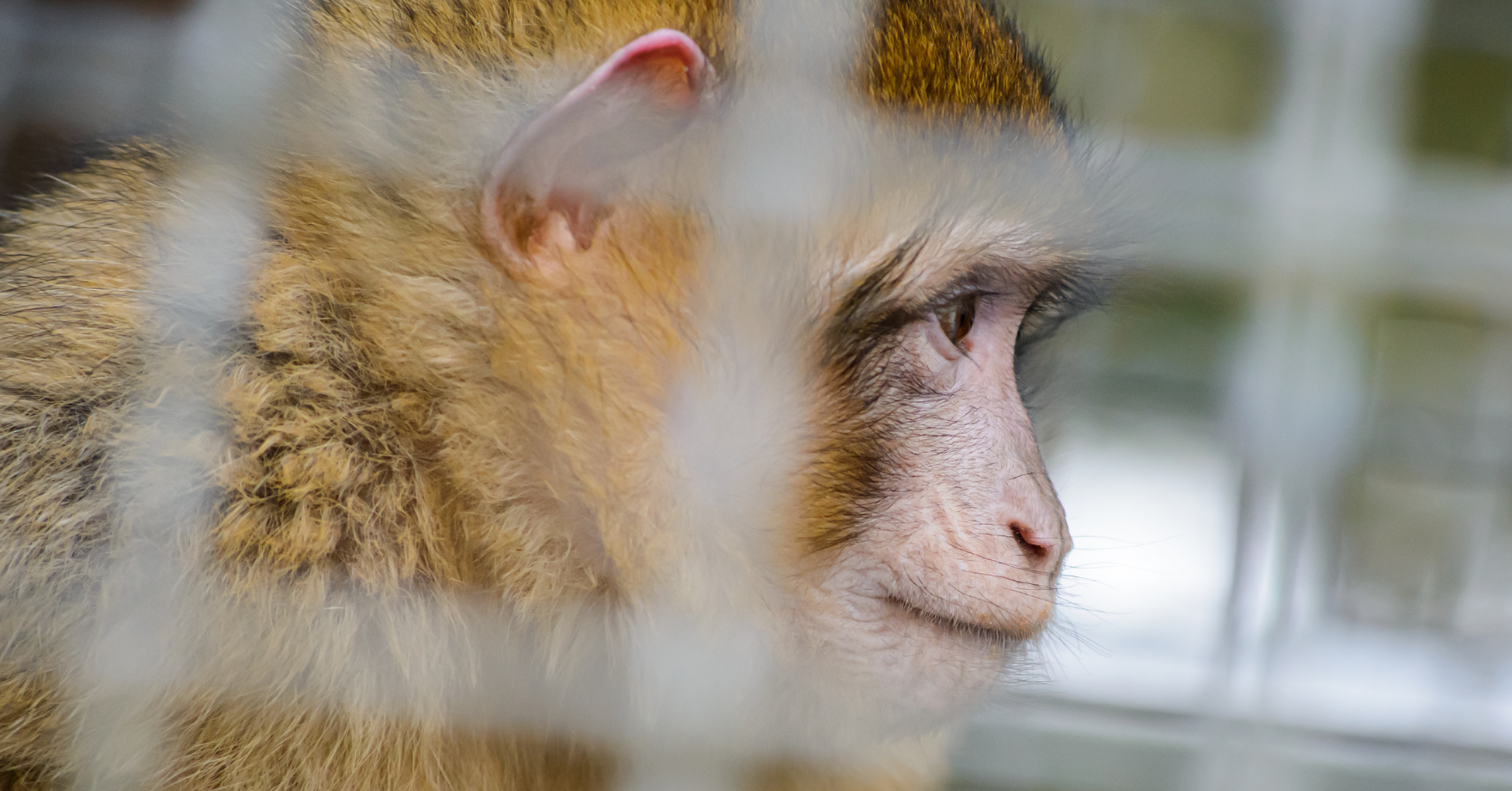
Monkeys Given Genital Herpes, Then Bled Out, with Your Money
Among humans, herpes simplex virus 2 (HSV-2) – which causes genital herpes – is a common infection.
Among other-than-human animals, it is not. Yet, other-than-human animals are being forced to experience this infection in U.S. laboratories, including those funded with our tax dollars.
A research article published this month details a federal-government-funded genital herpes study using monkeys (and, yes, it is as awful as you might imagine).
According to researchers, mice and guinea pigs remain the primary victims of genital herpes research, though the use of nonhuman primates to study human vaginal infection with HSV-2 has been common for, at least, the last 50 years. As one kind of nonhuman primate has proven not to be a good “model” for humans, researchers have merely moved on to a different kind.
Over and over again.
![]()


![Owl monkeys: “...usually develop fatal disease after HSV infection.” “...could be readily infected with HSV-1 [a different form of the Herpes Simplex Virus than HSV-2] via conjunctiva or cornea inoculation, but ... died of overwhelming infection with necrosis of the liver and adrenal glands soon after inoculation.”](https://live-riseforanimals.pantheonsite.io/wp-content/uploads/2024/09/Blog.Monkeys-Genital-Herpes-5-e1726152946541-1024x269.png)

![Baboons: “...could be infected with [HSV-2] but did not develop vesicular lesions.”](https://live-riseforanimals.pantheonsite.io/wp-content/uploads/2024/09/Blog.Monkeys-Genital-Herpes-7-e1726153064307-1024x179.png)
![Rhesus macaques: “Initial studies with rhesus macaques indicated that they could not be infected, but a more recent study showed that a minority of the animals shed virus for only a few days after infection and did not develop genital lesions.” “...latent HSV-2 DNA was not detected in sacral ganglia [’the main sites of latency of HSV-2 in humans, mice, and guinea pigs’] ... after intravaginal infection.” “B virus, a close homolog of HSV, usually is asymptomatic in rhesus macaques, but can cause fatal encephalitis in humans.”](https://live-riseforanimals.pantheonsite.io/wp-content/uploads/2024/09/Blog.Monkeys-Genital-Herpes-1-e1726153241488-1024x407.png)
This catalog of failures (or, as vivisectors would prefer, “findings”) is of absolutely no surprise to the researchers themselves, who plainly admit that “viral infections have different pathogenesis depending on the species of primate tested” – meaning, of course, that one species of nonhuman primate does not and cannot “model” viral infections for other species of nonhuman primates (including humans). The researchers go on to provide examples of other viruses tested in different kinds of primates with disparate results, before seeming to remember who writes their checks . . . and trying to cobble together an argument that the kind of monkey they used for this study “may serve as an improved model” for genital herpes in humans.
This ridiculous “conclusion” was facilitated by the NIAID (one of the NIH’s largest component institutes), which paid animal researchers to forcibly infect young Cebus apella monkeys with genital herpes; examine, swab, and irradiate their genitals; and then kill them.
Cebus apella monkeys – more commonly known as brown or tufted capuchins – are small (approximately 4-11 pound), playful, intelligent, and curious primates, who are native to South America, live in social groups, and can live into their forties. Unfortunately, they are exploited by humans for meat, “pets”, and experimentation – and the latter is the fate met by four, young capuchins purchased by the NIAID from Alpha Genesis, Inc. (which describes itself as the “world’s premier provider of the finest nonhuman primate products and services”, including “nonhuman primate models”).
Identified only as “A-333”, “J-333”, “F-Bethesda”, and “K-Bethesda”, these 1-2 year old female monkeys endured months of physical and sexual assault.
As part of the research study, all four girls were:
- Injected intramuscularly with Depo-Provera;
- Infected “intravaginally” with HSV-2 — at least five times — by having “infectious liquid … instilled in the[ir] vaginal vault[s]” and, then, being “held upside down for 5 minutes”;
- Subjected to over 35 physical exams of their genitals, over 35 blood draws, and more than 70 “[v]aginal and other lesion swabs”;
- Made to endure multiple bouts of UV irradiation of their perineums, resulting in “skin irritation”;
- Terminally bled and killed.
In addition to the above, A-333 and J-333 developed “vaginal lesions” and suffered weight loss.

This is the kind of unethical barbarity that we are forced to make possible with our tax dollars, even though the federal government tries to hide most of it from us.
Join us in supporting the COST Act, which would require the National Institutes of Health – the largest funder of animal research worldwide – to admit how it uses billions of our tax dollars to torture and kill countless other-than-human animals in labs every year.
Tell them “A-333”, “J-333”, “F-Bethesda”, and “K-Bethesda” sent you.
Share this story on Facebook or X to expose the truth and inspire others to take action.